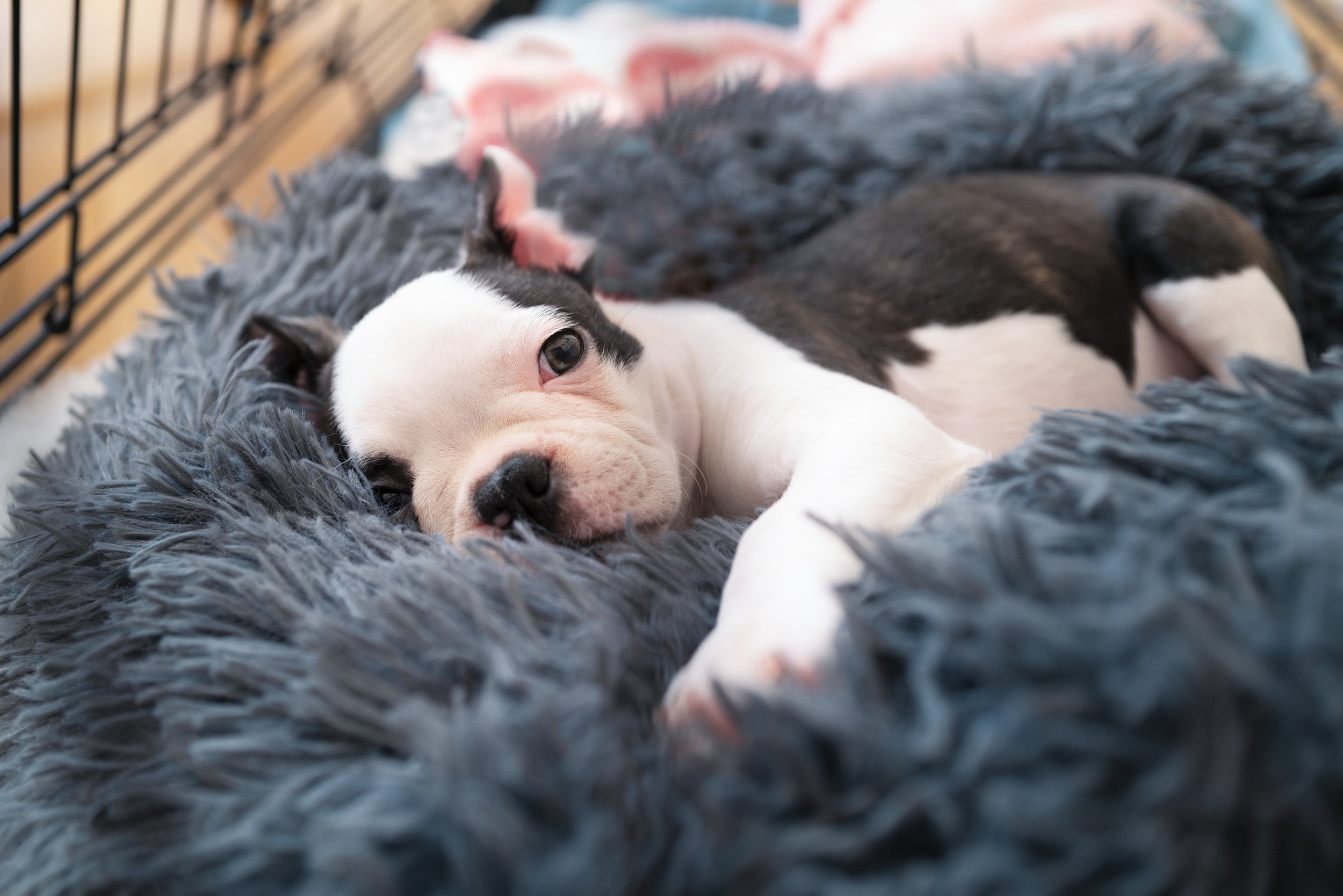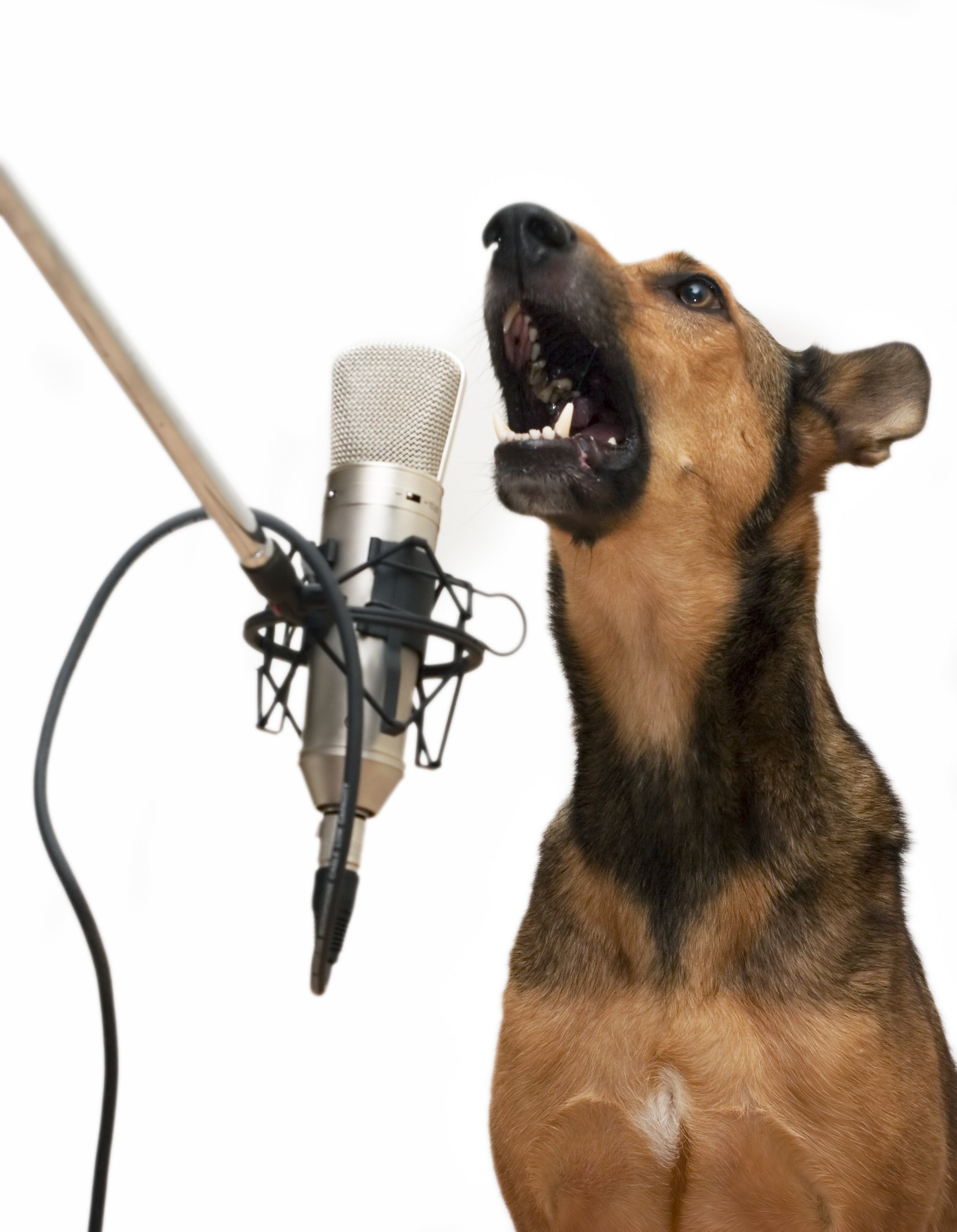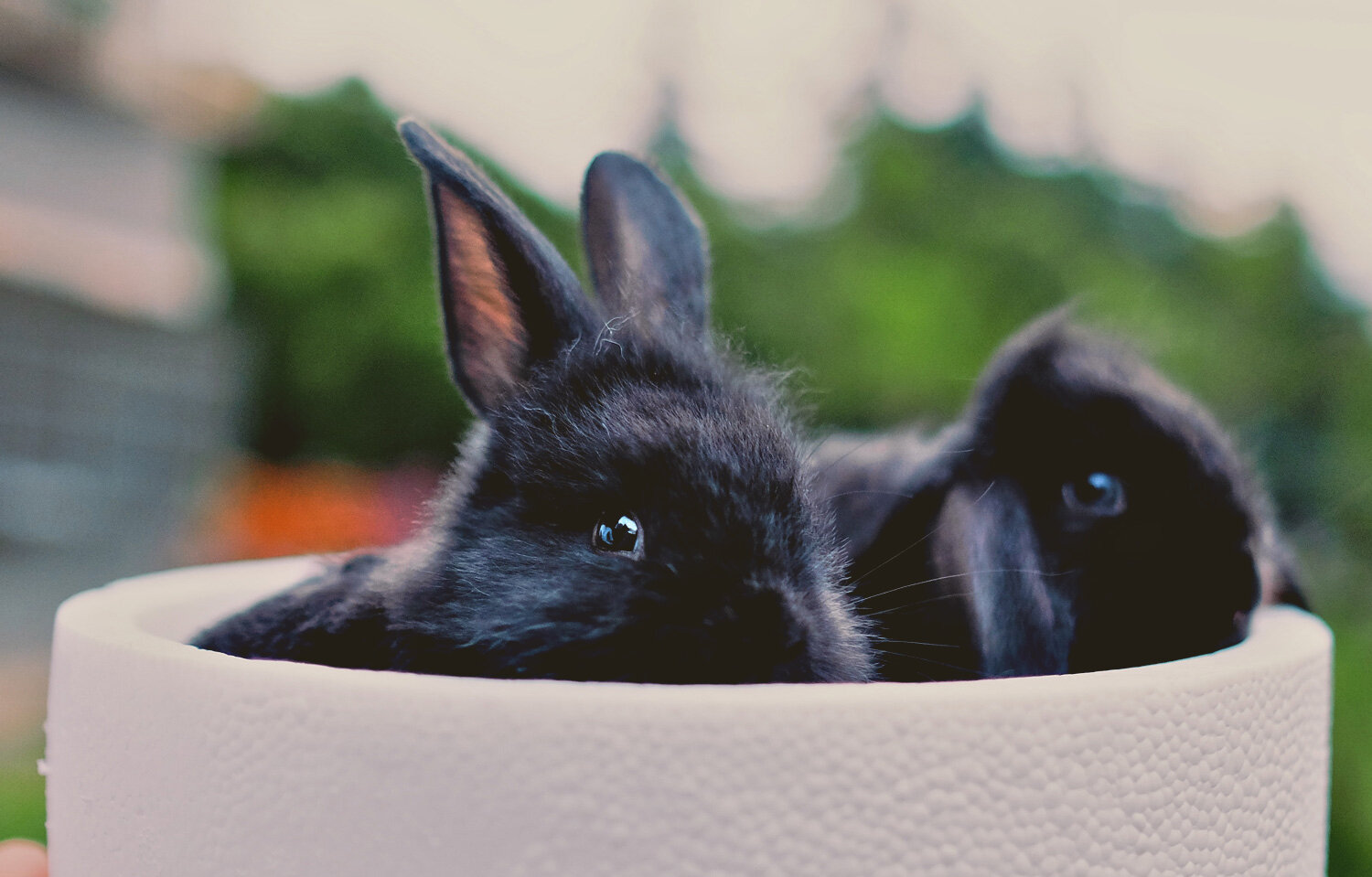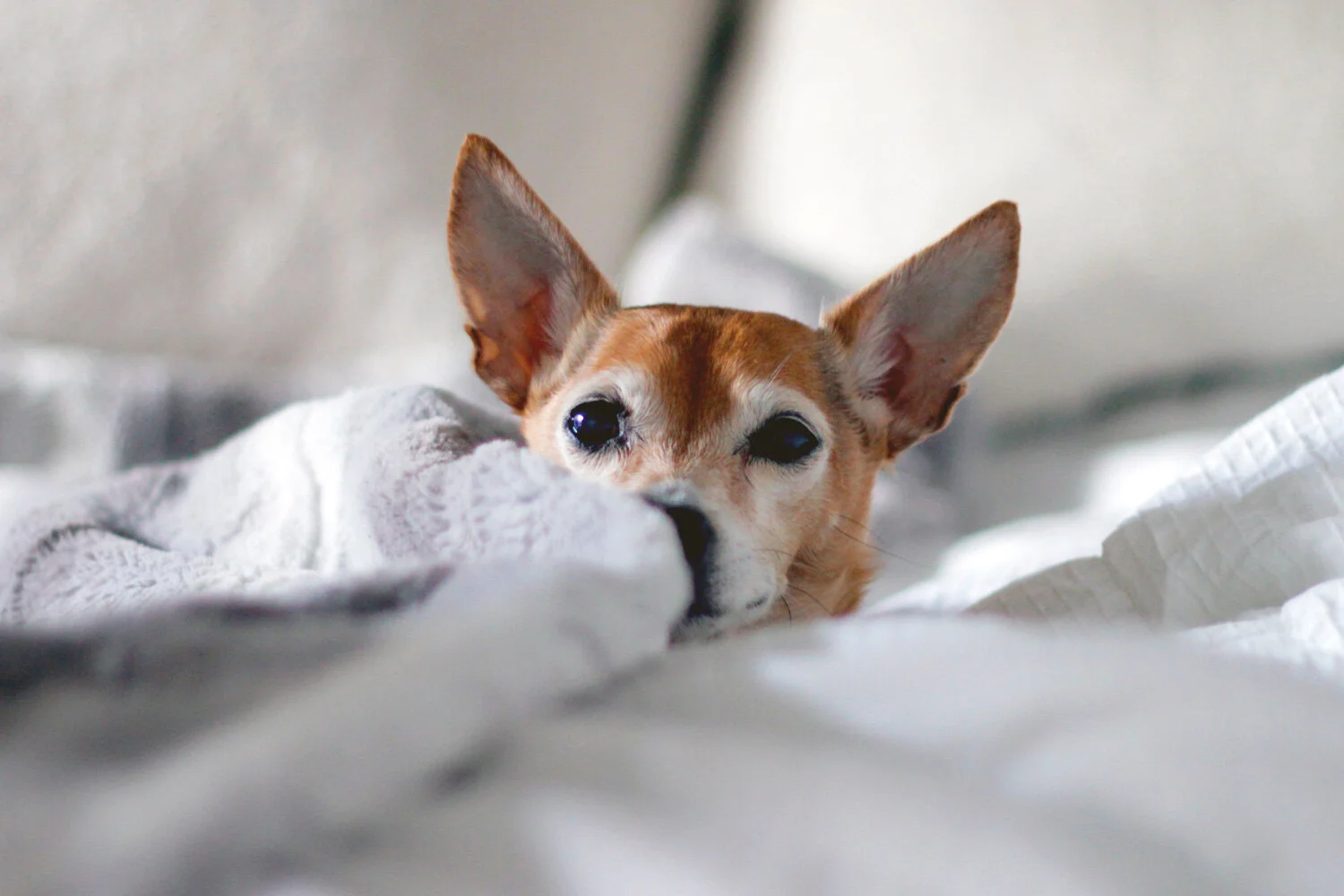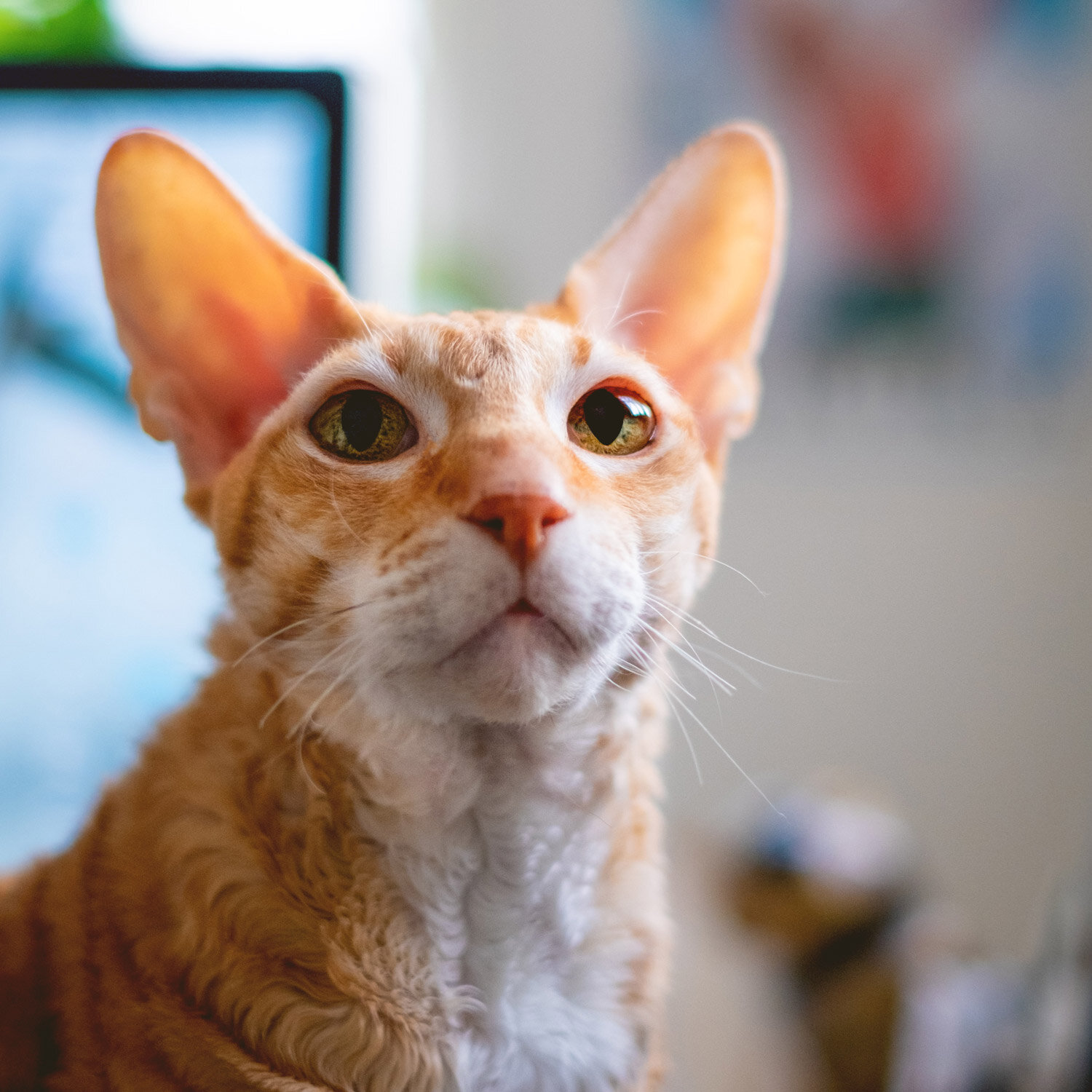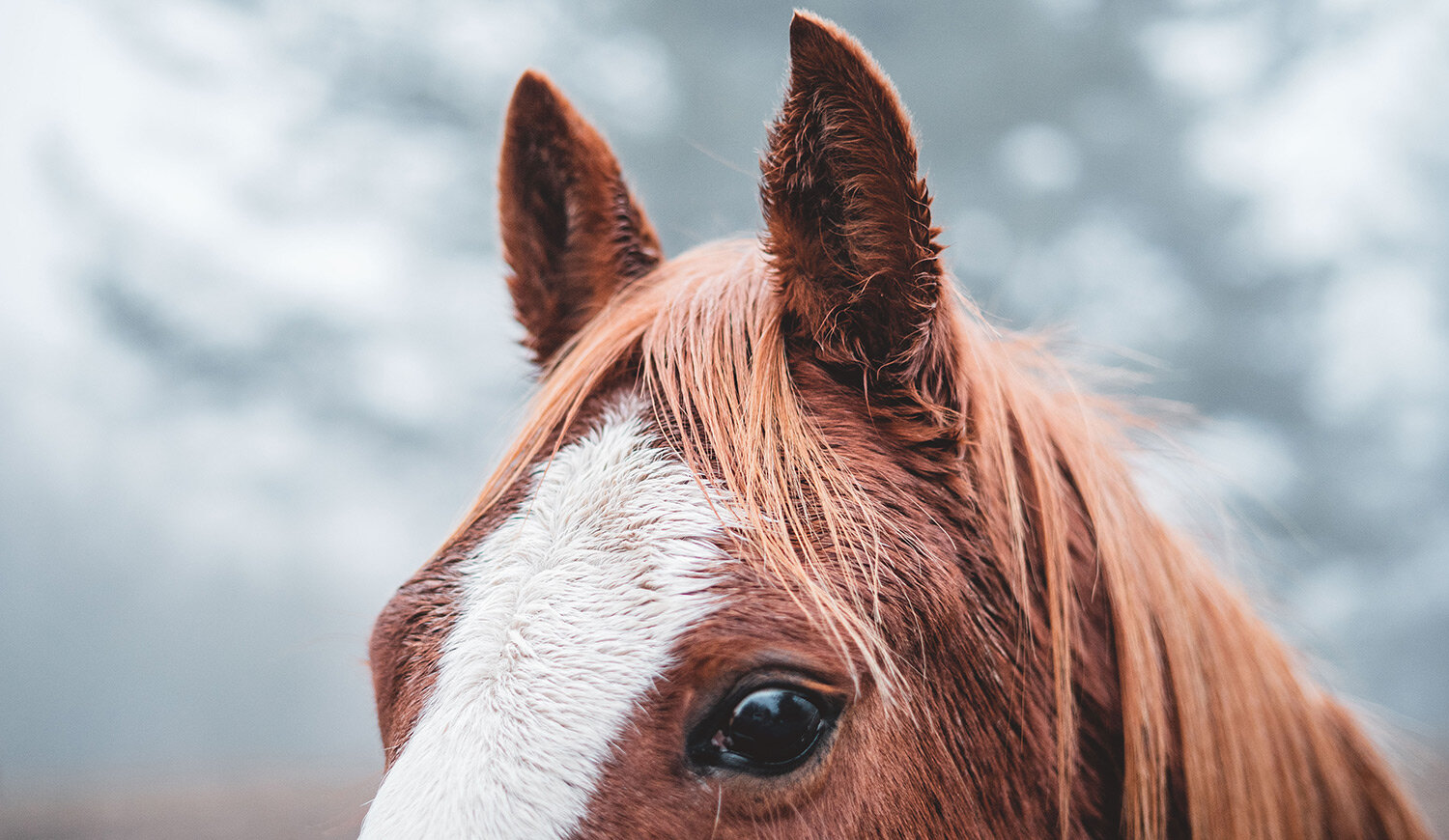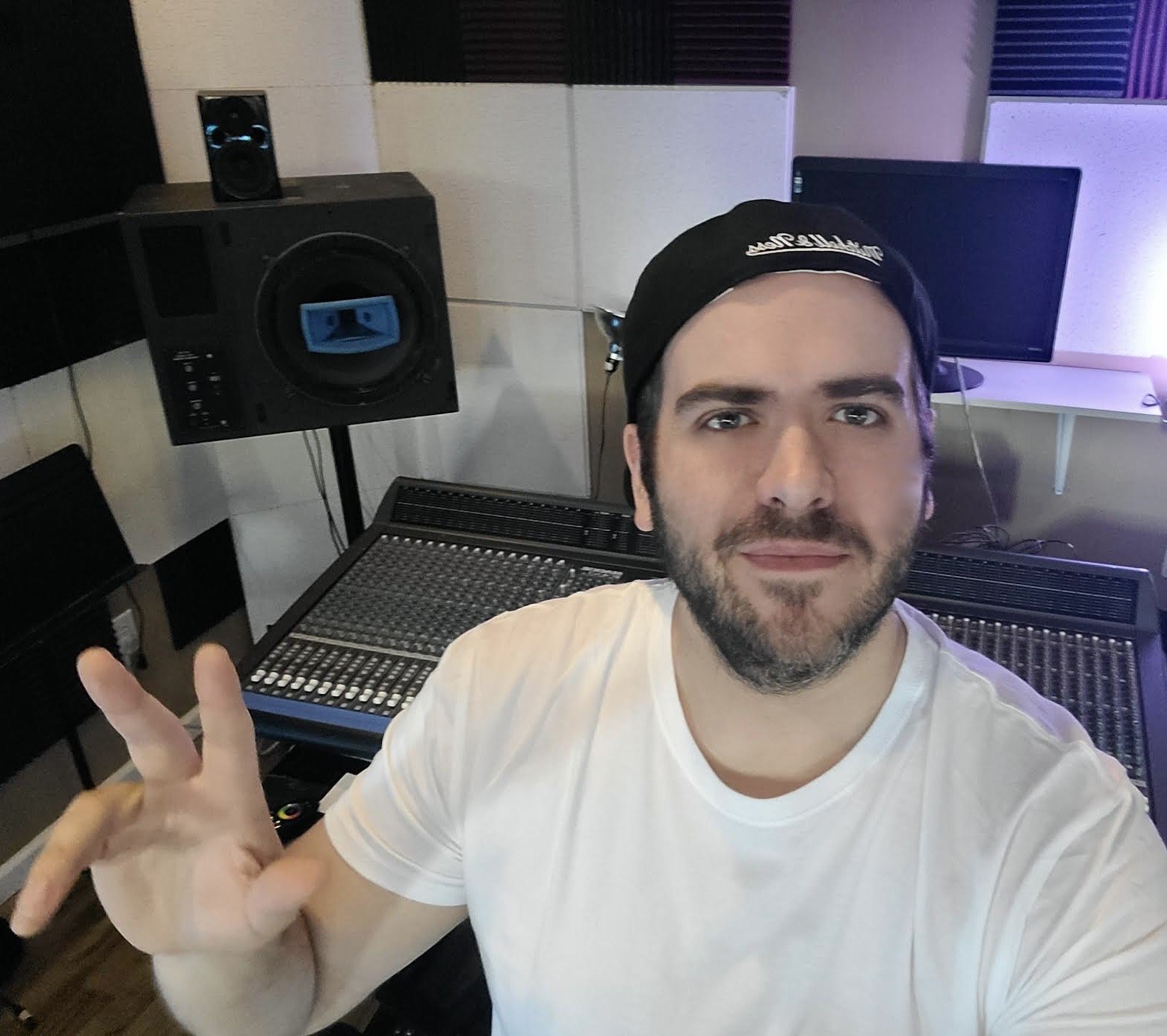Bringing a puppy home and creating an environment that nurtures calm behaviors sounds easier than it is in reality. Even if you’ve had many dogs throughout your lifetime, each dog, each breed, each circumstance brings a new challenge to this wonderful handful of furry being.
Adopting a puppy into your home is an undeniable joy. Seeing a puppy’s playfulness and energy is endearing and entertaining. The first two years of a puppy’s life are full of new experiences about their world, and hearing is essential for their learning and training.
Newborn puppies are deaf until about three weeks of age. Until then, a puppy uses her sense of smell to navigate to Mom, siblings and her surroundings. Eyes begin to open in the second week of life, between ten to fourteen days. Puppies’ ears begin to open generally around fourteen to eighteen days old and continue to develop until eight weeks old. Once they have their full hearing ability, they hear twice the frequency levels of humans and sounds four times farther away. When you first bring home a puppy, at this early age, the distinctive sound of your voice becomes imprinted as their new family.
Hearing and Sleep
Canine ears, like human ears, never close! When we sleep, our ears are still hearing, though our brains go in and out of responding to sound according to the different stages of sleep. There are two basic types of sleep: REM-sleep and non-REM sleep, (rapid eye movement) which has three different stages.
Stage One occurs right after you fall asleep and is very short.
Stage Two is a light sleep. Heart rate slows and body temperature drops.
Research has identified that the brain waves of dogs during sleep are comparable to those of humans. Have you seen your dog twitch when she is sleeping? This is when your dog has entered REM sleep or rapid eye movement. Compared to humans who have 25% of REM deep sleep, dogs only need 10% of REM for health. Getting quality sleep every day is a key component of your dog’s health at any age.
If your dog experiences agitating noises while home alone, your dog may not be getting sufficient rest. This is important because during sleep, dogs, just like humans experience allostatic regulation, which is the balancing of cell function. How much sleep a dog needs depends on the breed of dog, the size of the dog, their diet, daily walks, and amount of play exercise.
Canine rest periods weave in and out of daily life. As sleep or rest is a major part of their day for health and rebalance, the acoustics and sounds in their environment is a key factor. If their environment is noisy, like the reverberating cement walls of animal shelters, dogs hardly get a chance to rest deeply. In a veterinary kennel, the same acoustic issues can apply
Stage Three is the deep sleep
Each of these stages is linked to specific brain waves and neuronal activity. These are developments which can exacerbate the emotional stress of separation anxiety. Have you seen your dog go into a deep rest right after a veterinary checkup? Just being home helps your dog succumb to the quiet and safety to release muscle tension due to stress. There’s no place like home!
When a puppy is learning to be home alone, they can experience acute separation anxiety. The release of the adrenaline hormone causes a state of stress and if the stress continues, cortisol, known as the stress hormone, is released into the body, causing your dog to be anxious and reactive. During the night, if you’ve ever tried to sleep while your puppy is being crate trained, you have heard with your own ears the level of stress they are experiencing. It’s understandable that your puppy just wants to be cuddled and be close to you for deep relaxation but just like a baby, they need at some point to self-regulate into a state of relaxation.
“ I have a new puppy that has separation issues not only when I'd leave the house, but when I leave the room. He will cry, bark and even go to the bathroom in his crate when I'd leave. I use Puppy Calm music now and my puppy knows when the music goes on it’s time to crate up and goes to sleep and rests.”
“Our puppy is very anxious and this really helps calm him. He sleeps really well, it's soothing and helps block out any sounds that would wake him. If he's whimpering or barking, he usually calms down within 3 or 4 minutes after playing the soothing sounds. I also enjoy having it on during the day to keep him calm while I work (since I work from home).”


